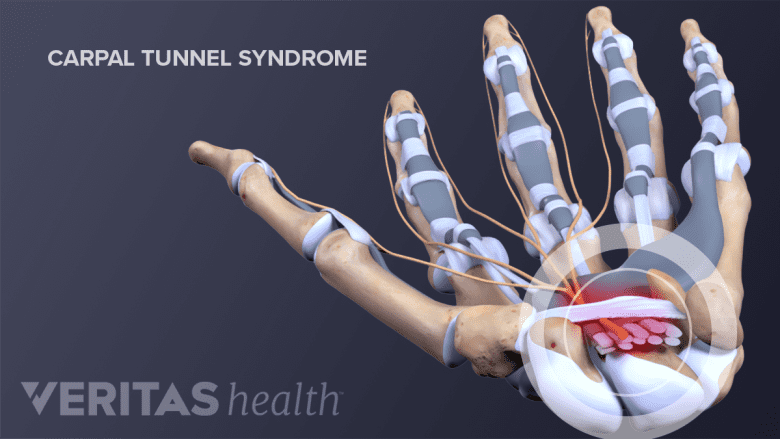Before you can treat your hand pain, you need to know what’s causing it. Two of the most common causes of hand pain are arthritis and carpal tunnel syndrome. How can you tell if you have one—or both—of these conditions?
Both arthritis and carpal tunnel syndrome can affect your ability to do everyday activities, such as getting dressed, driving, and using your phone and TV remote. Both can be triggered by activity or repetitive motion. To distinguish between the two conditions, doctors look for certain signs and symptoms.
Symptoms of arthritis in the hand
Many different types of arthritis can affect the hand. If you have any type of hand arthritis, you may notice joint pain and:
- Swelling in your wrists, fingers, and/or knuckles
- Redness and warmth in the skin over your wrist(s) and knuckle(s)
- Nodes or bony growths at or near the affected joints of the hands (for example, rings may no longer fit, even if your fingers are not swollen)
- Symptoms that are worse in the morning or after lots of activity
Read more about Recognizing Osteoarthritis in the Hand
Carpal tunnel syndrome can also cause symptoms that are worse in the morning, so that is not necessarily a distinguishing symptom.
People who have autoimmune arthritis, such as rheumatoid arthritis and psoriatic arthritis, may also feel tired and/or unwell.
Symptoms of carpal tunnel syndrome
The two classic symptoms of carpal tunnel syndrome are pain, numbness, and/or tingling that:
- Affects the thumb, index and middle fingers. You may also feel it a bit in your ring finger, but not your pinky finger
- Wakes you up at night or is worse in the morning
Other symptoms of carpal tunnel include pain, numbness, and tingling that:
- Feels better if you change your hand’s position or shake or wring your hands
- May extend up your forearm
- Develops or gets worse when you flex your wrist 90° for 1 minute or longer (Phalen sign)
You may also notice that pressing on your wrist causes pain.
Read more about Carpal Tunnel Syndrome Symptoms on Sports-health.com.
What causes carpal tunnel syndrome symptoms
The pain and other symptoms of carpal tunnel occur when the median nerve is inflamed or irritated. The median nerve controls the sensation in your thumb, index finger, and middle finger. It travels through a narrow space at the center of the wrist called the carpal tunnel. If the tendons that also run through the carpal tunnel become inflamed, carpal tunnel syndrome can develop.
Other less common conditions can cause chronic numbness and tingling in the hands, including but not limited to cervical spine disorders, such as cervical radiculopathy.
Arthritis and carpal tunnel can occur together
People who have arthritis in the hand are more likely to develop carpal tunnel syndrome. In fact, at any given time, about 10% of people with rheumatoid arthritis also have carpal tunnel syndrome.1Agarwal V, Singh R, Wiclaf, et al. A clinical, electrophysiological, and pathological study of neuropathy in rheumatoid arthritis. Clin Rheumatol 2008;27:841–4. As cited in DeQuattro K, Imboden JB. Neurologic Manifestations of Rheumatoid Arthritis. Rheum Dis Clin North Am. 2017 Nov;43(4):561-571. doi: 10.1016/j.rdc.2017.06.005. Epub 2017 Aug 31. Review. PubMed PMID: 29061242. The most common type of arthritis, osteoarthritis, is also associated with carpal tunnel syndrome.
Learn more:
- 1 Agarwal V, Singh R, Wiclaf, et al. A clinical, electrophysiological, and pathological study of neuropathy in rheumatoid arthritis. Clin Rheumatol 2008;27:841–4. As cited in DeQuattro K, Imboden JB. Neurologic Manifestations of Rheumatoid Arthritis. Rheum Dis Clin North Am. 2017 Nov;43(4):561-571. doi: 10.1016/j.rdc.2017.06.005. Epub 2017 Aug 31. Review. PubMed PMID: 29061242.






